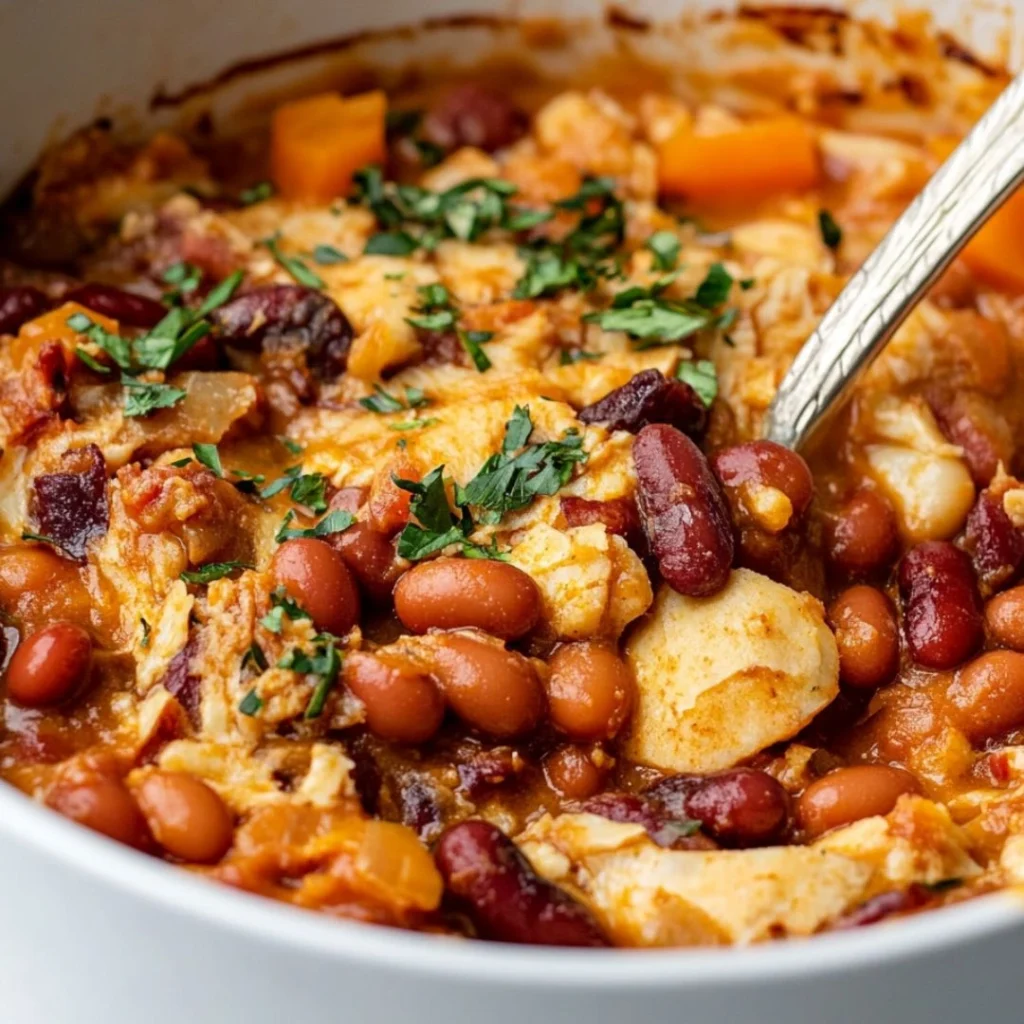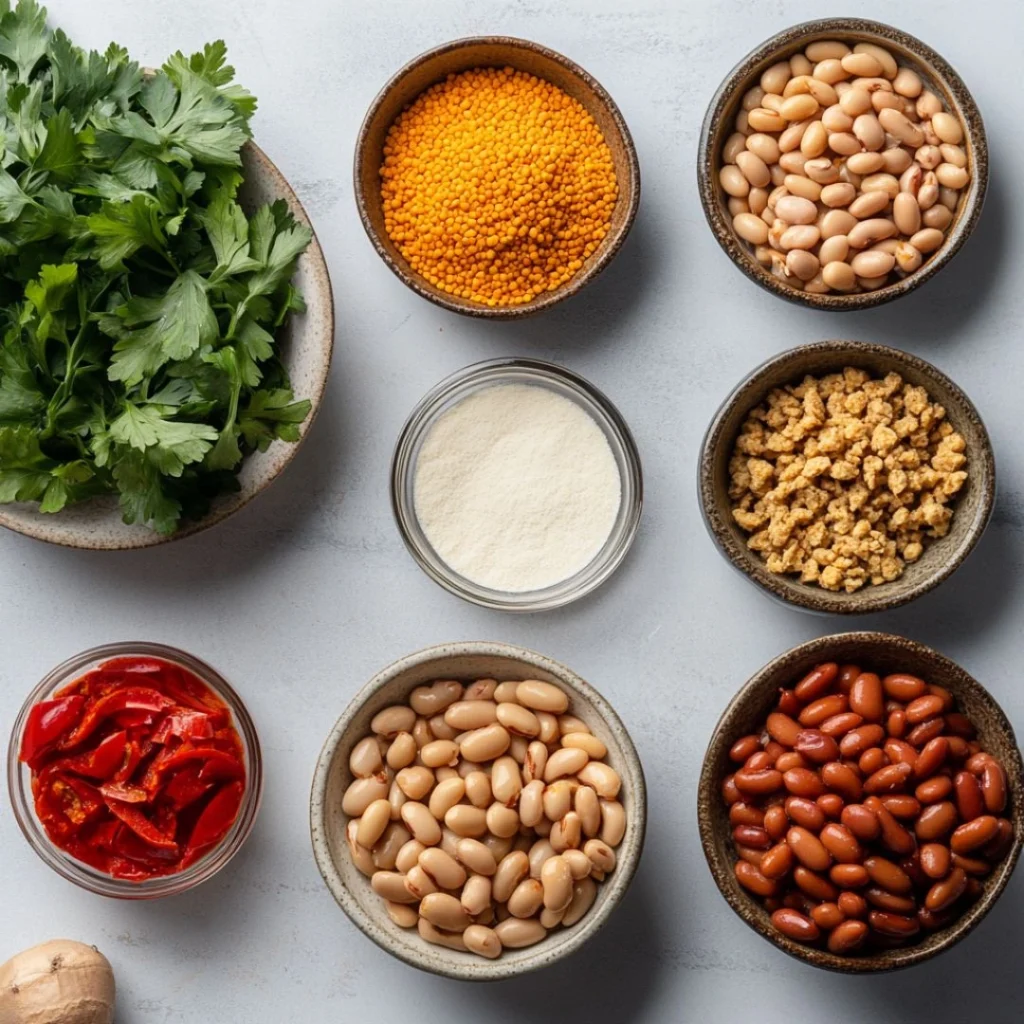
There’s something deeply nostalgic about vegan baked beans recipe. The aroma alone can transport you to childhood summer cookouts, picnics in the park, or even a humble kitchen table on a lazy Sunday afternoon. This vegan baked beans recipe brings all that comfort, but without the bacon or processed sugars commonly found in traditional versions.
When I was a child, my grandmother made fagioli all’uccelletto—a Tuscan bean stew with sage and tomato. While different in flavor from American baked beans, it taught me how much love can be packed into a pot of beans. Years later, when I first tasted sweet and smoky American-style baked beans, I was instantly hooked. Now, this vegan version is a staple in my home all summer long.
Table of Contents
What Makes These Baked Beans Recipe Special?
If you’re wondering what sets this recipe apart, let me give you the scoop:
- Deeply flavorful with layers of sweetness, tang, and smokiness.
- No refined sugars, using maple syrup and molasses for a rich natural sweetness.
- One pot wonder—easy cleanup, no fuss.
- Freezer-friendly, making it ideal for batch cooking or meal prep.
This dish can be eaten warm or room temperature, making it especially great for potlucks, picnics, and summer grilling sessions.
Ingredients You’ll Need
Base:
- 2 cans (15 oz each) navy beans or great northern beans, drained and rinsed
- 1 tbsp olive oil
Aromatics:
- 1 medium yellow onion, finely chopped
- 3 cloves garlic, minced
Flavor Foundation:
- 1/2 cup tomato paste
- 1 tbsp maple syrup
- 1 tbsp molasses
- 2 tbsp apple cider vinegar
- 1 tbsp Dijon mustard
- 1/2 cup vegetable broth
Spices:
- 1 tsp smoked paprika
- 1/2 tsp ground cumin
- Salt and black pepper to taste
- Optional: 1/2 tsp liquid smoke
Tip: Want an extra rich depth? Use fire-roasted tomatoes in place of some of the broth for a slightly chunky, zesty finish.

How to Make Vegan Baked Beans (Step-by-Step)
For the best results, follow these steps to create a flavorful vegan baked beans recipe that simmers to perfection in your oven.
Step 1: Sauté Your Aromatics
In a large, oven-safe skillet or Dutch oven, heat the olive oil. Sauté the chopped onions until they’re golden and soft—about 6–8 minutes. Add garlic and cook until fragrant.
Chef’s Tip: Slow-cooking the onions helps build a flavor base—don’t rush this step!
Step 2: Add Tomato Paste
Stir in the tomato paste and let it cook down for 2–3 minutes. This helps to concentrate the flavors and eliminates that raw tomato taste.
Step 3: Mix in the Flavors
Now add maple syrup, molasses, vinegar, mustard, and all the spices. Stir thoroughly to combine into a thick, luscious sauce.
Fun Fact: Molasses was a key ingredient in early New England bean recipes, dating back to colonial times when it was a common sweetener.
Step 4: Beans + Liquid
Add the beans and pour in the vegetable broth. Mix to coat every bean with that flavor-packed sauce.
Step 5: Bake It
Preheat your oven to 375°F (190°C). Place the skillet or transfer to a baking dish. Bake uncovered for 30–35 minutes until the sauce has reduced and thickened.
Step 6: Rest and Serve
Let it cool for 10 minutes before serving. This gives the sauce time to thicken further and cling beautifully to the beans.
Serving Ideas: Beyond the BBQ
Vegan baked beans are incredibly versatile. Here are some of my favorite ways to serve them:
- Classic BBQ Combo: With grilled veggies, vegan hot dogs, or burgers.
- On Toast: A high-protein breakfast with avocado slices.
- Taco Night: Use them as a hearty filling alongside slaw and salsa.
- Baked Potato Topper: Add nutritional yeast or vegan cheese for comfort food heaven.
Nutrition Benefits of Vegan Baked Beans
Beans are nutritional powerhouses. Here’s a breakdown of what you get per serving:
- High in fiber, supporting gut health.
- Packed with plant-based protein.
- Contains essential minerals like iron, magnesium, and potassium.
- Naturally low in fat and cholesterol-free.
Customizations & Variations
Make It Spicier:
- Add diced jalapeños, red chili flakes, or a splash of hot sauce.
Southern-Style Twist:
- Stir in a bit of brown sugar and a dash of cayenne.
- Pair with cornbread or collard greens.
Smoky BBQ Beans:
- Increase liquid smoke and stir in BBQ sauce (make sure it’s vegan).
Bean Swap:
- Use pinto, black beans, or even lentils if you’re out of navy beans.
Make-Ahead & Freezing Tips
These beans store and reheat like a dream:
- Fridge: Store in an airtight container for up to 5 days.
- Freezer: Portion into freezer-safe containers and freeze for up to 2 months.
- Reheat: Microwave or stovetop until heated through. Add a splash of broth to loosen the sauce if needed.
Frequently Asked Questions :
Can I use dry beans?
Absolutely! Soak 1 cup dry navy beans overnight and cook until tender before using. You’ll need about 3 cups cooked beans for this recipe.
Are these gluten-free?
Yes, as long as your mustard and broth are certified gluten-free.
Can I make them in a slow cooker?
Definitely! Sauté the aromatics first, then combine everything in the slow cooker. Cook on low for 6 hours or high for 3–4.
What are easy baked beans made of?
Easy baked beans typically include canned beans (like navy, pinto, or kidney), ketchup, brown sugar, mustard, and sometimes bacon or onions for added flavor. They’re simmered or baked in a sweet and tangy sauce.
Serve your vegan baked beans recipe with grilled vegetables, vegan burgers, or even cornbread for a satisfying, plant-based feast.
